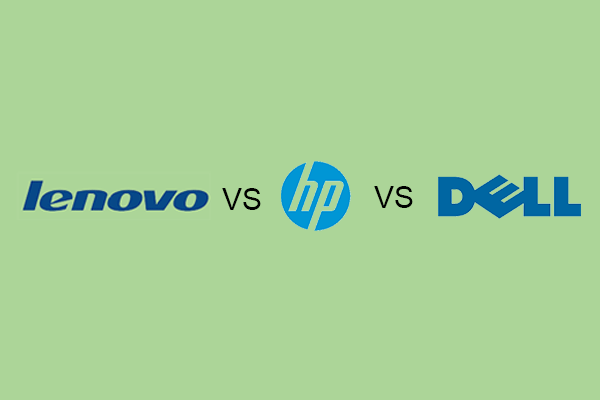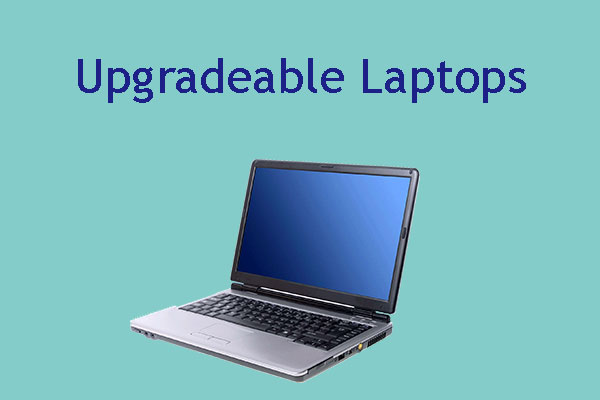What is an all in one computer? Comparing all-in-one computer with desktops or laptops, what are the benefits and disadvantages of the AIO PCs? In this post, MiniTool Partition Wizard introduces all-in-one PCs to you and then you can decide whether you should buy such a PC.
What Is an All-in-One computer?
What is an all in one computer? All-in-one PC (“AIO” for short) is a kind of desktop computer that integrates a chassis (including internal microprocessor, motherboard, hard disk and other components), speakers, cameras, and displays into one.

The first AIO computer was developed by Apple and this company has launched several all-in-one computers on the market, such as the original Macintosh in the 1980s and the iMac from the 1990s to the present. In 2009, Intel launched the low-cost CPU Intel Atom, prompting various computer manufacturers to increase the design and mass production of AIO computer models.
So far, the main brands that have launched all-in-one machines on the market include Apple, Microsoft, Acer, Lenovo, Dell, Asus, MSI, HP, and AOpen.
Benefits and Disadvantages of AIO Computers
If you want to know the benefits and disadvantages of AIO computers, you should compare it with desktop computers or laptops.
All-in-One Computer vs Desktop
Comparing AIO computers and desktop computers, there are mainly 6 differences:
1. Space Occupation
As we all know, a desktop computer is composed of two main components: the main chassis and the screen. In addition, it also needs a lot of cables to connect the two components. As for an AIO computer, its screen and main chassis are integrated together and it need no additional cables. Therefore, an AIO computer occupies less space than a desktop computer.
2. Hardware and Performance
Due to the limitation of internal space, all-in-one computers mostly use mobile processors, graphics cards, memory and other accessories, and the design of heat dissipation is also restrained. Therefore, in terms of performance, under the same configuration, the all-in-one is slightly lower than desktop machine.
As for the desktop computer, because it has a main chassis with larger space, its heat dissipation could be better. Therefore, it can give full play to the performance of the hardware, and even the overclocking design.
3. Scalability
Just like laptops, the internal space of all-in-one computers is limited. Therefore, some all-in-one computers use on-board memory or solid-state drive solutions to reduce the size of the whole machine. The processor and graphics card are also soldered on the motherboard.
As a result, AIO computers are hard to upgrade. As for desktop computers, almost all of their components are upgradeable.
Desktop VS Laptop: Which One to Get? See Pros and Cons to Decide!
4. Maintainability
Because most of the hardware is integrated on a motherboard, once a component is broken, the all-in-one computer may need to replace the entire motherboard. Coupled with the relatively small number, AIO computer users may also face the dilemma of lack of accessories. Therefore, the all-in-one machine is basically not maintainable in hardware.
On the contrary, desktop computers have the best maintainability among all kinds of PCs.
5. Mobility
Aside from the keyboard, mouse and other peripherals, the hardware configuration of the all-in-one machine is integrated with the screen, and the weight of the whole machine is relatively light. Therefore, it can be easily carried away.
As for desktop computers, they consist of chassis and screen. Most of the desktop chassises are made of pure steel, which is very heavy. In addition, the desktop internal hardware is larger and heavier than all-in-one PCs (such as discrete graphics cards, large-size mechanical hard drives, etc.), so the desktops are bulky are not easy to move.
6. Consumer Community
The all-in-one computer can cope with daily office needs, such as daily web browsing, video conferencing, document processing, email processing, simple graphic design, online video viewing, etc.
But if you are engaged in designers, program development, modeling rendering, video editing, game development, professional e-sports, etc., the demand for computer performance is very high, and then only desktop computers or even server-level computers can be competent.
All-in-One Computer vs Laptop
Comparing all-in-one PCs and laptops, their performance levels are pretty much identical because they use almost the same components. The only compelling advantage that an all-in-one PC might hold is the size of the screen. All-in-one PCs generally come with screen sizes between 20 and 27 inches, while laptops are generally restricted to 17-inch and smaller displays.
Comparing all-in-one PCs, laptops advantages are portability and lower price.



User Comments :